Posted by Elena del Valle on November 11, 2011

Aim High book cover
Photos: Laura Contreras-Rowe
After finding financial and career success in real estate and happiness in her personal life Laura Contreras-Rowe, a realtor and business owner from Virginia, looked around and asked herself what she might do to bring attention to successful women like her across the country. She dedicated her energy, enthusiasm, entrepreneurial spirit and $50,000 to a book project.
Ten months later, in 2009, she held the result of her efforts, 3,500 copies of Aim High Extraordinary Stories of Hispanic and Latina Women ($27.95), a 153-page hard cover self published book in which she profiles 33 Latina women of her choosing. As of this writing 3,000 copies are gone and a new printing of the book is due January 2012.
Featuring Bible quotes the book profiles women in varied walks of like. Each profile includes a biography and color photos taken by Contreras-Rowe during meetings with the women.
The profiles are of women in a number of professions such as orientation and mobility specialist, network business how host, basketball coach, former treasurer of the United States, executive at a technology company, executive director of a non profit for boys and girls, artist, chef and catering company owner, executive director of a non profit children’s home, life coach and speaker, actor, school psychologist, drag racer, program manager at a girl’s non profit, and writer educator and performance artist; as well as deputy manager at a government space program, photographer, graduate student, registered nurse, author, retired school principal and business owner, dentist, dean at a university, publisher, police sergeant, dance teacher and business owner, strategist at a government intelligence agency, business founder and owner, non profit president and chief executive officer, Indy race car driver, lieutenant commander in the armed forces, and attorney.
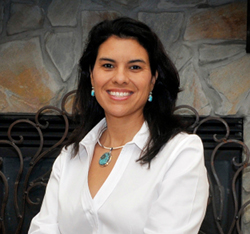
Laura Contreras-Rowe, author, Aim High
The book was recognized with the Independent Publishers Book Awards 2010 Gold First Place in Best Non-Fiction Multicultural Juvenile Youth Young Adult Book; International Latino Book Awards 2010 First Place in Best Gift Book, Second Place in Best Cover Design and Honorable Mention Third Place Mariposa Award for Best First Book; and Latino Literacy Now-2010 Book into Movie Awards and Second Place Documentary Category.

Click to buy Aim High
Comments:
Filed Under: Books
Posted by Elena del Valle on November 4, 2011

Cultures of the City book cover
Photo: University of Pittsburgh Press
Fifteen academics, eight women and seven men, address Latino identities in urban environments in Latin America and the United States in Cultures of the City Mediating Identities in Urban Latin/o American (University of Pittsburg Press, $25.95). The book was edited by Richard Young, professor emeritus of Spanish and Latin American studies, University of Alberta, and Amanda Holmes, department chair of Hispanic studies, McGill University.
The 262-page softcover book with 15 illustrations was published in 2010. It is divided into three main sections, Imagining Urban Identities, Urban Identities and Cultures on the Periphery, and Performance and the Ritualization of Urban Identities.
While most of the book addresses Latin American cities including Asuncion, Bogota, Buenos Aires, Havana, Lima, Mexico City, Recife, and Salvador two chapters discuss cities in the United States. Rodolfo D. Torres and Juan R. Buriel address Feasting on Latina/o Labor in Multicultural Los Angeles and Catherine L. Benamou addresses Mediating the Public Sphere in Latina/o Detroit: Heart and Margin of an Embattled Metropolis.
Benamou is associate professor of Film and Media Studies and Chicano/Latino Studies, University of California-Irvine. Buriel is assistant professor of English, College of the Canyons in Valencia, California. Torres is professor of Urban Planning and Political Science, University of California-Irvine.

Click to buy Cultures of the City
Comments:
Filed Under: Books
Posted by Elena del Valle on October 21, 2011
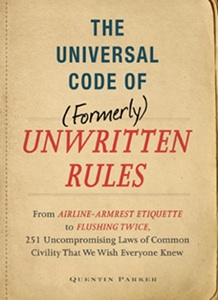
The Universal Code of Formerly Unwritten Rules book cover
Photo: Adams Media
Politeness is the glue that binds us. Holding a door open for someone or introducing a colleague to another at an event are common courtesies we may not event stop to think about. Some of these rules may be informal and vary depending on the setting, part of the country (or world), culture and so forth. Sometimes it’s challenging to avoid getting in the proverbial foot-in-of mouth situation which could prove tricky or embarrassing at work or when with colleagues from work.
Quentin Parker, a journalist and teacher, has a possible answer to those times, his own code of conduct. It includes simple concepts that may appear obvious such as “Never hog both armrests when you fly; and doorways, staircases, and elevator entrances are inappropriate spots to stop and chitchat.”
His rules, somewhat tongue in cheek, were recently made available to others in the form of a book, The Universal Code of Formerly Unwritten Rules: From Airline-Armrest Etiquette to Flushing Twice, 251 Uncompromising Laws of Common Civility That We Wish Everyone Knew (Adams Media, $13.95), published this year.
The 234-page softcover book is divided into seven chapters. Chapter 2, from pages 33 to 60, is dedicated to Unwritten Rules in the Workplace. Some rules in other chapters may also apply to work situations. Many rules in Chapter 6 about spoken and written communication may appeal to those in the work place. For example, Unwritten Rule #185 One should never write an entire e-mail in all capital letters.

Click to buy The Universal Code of (Formerly) Unwritten Rules
Comments:
Filed Under: Books
Posted by Elena del Valle on October 14, 2011
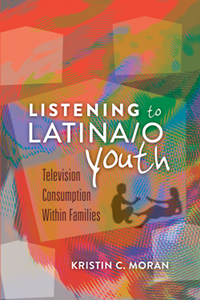
Listening to Latina/o Youth book cover
Photos: Peter Lang
Kristin Moran, associate professor in the Department of Communication Studies at the University of San Diego, was curious to know how Latinos consume media and their perceptions of Spanish language television as well as of the portrayal of Latinos in mainstream media. Toward that goal she conducted detailed interviews with 17 families in 2008 and again in 2010.
In Listening to Latina/o Youth Television Consumption Within Families (Peter Lang Publishing, $33.95) she shares her findings and conclusions. She begins with a demographic profile of the market segment she examined followed by an analysis of media targeting Latinos including Spanish language, bilingual and Hispanic oriented outlets.
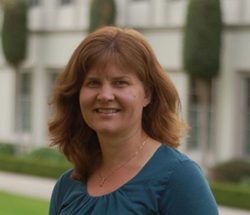
Kirstin C. Moran, author, Listening to Latina/o Youth
She dedicates the following chapters to her interview findings with an emphasis on the media consumption habits of youth and Mexican American families, addressing news and telenovela (Spanish language serialized programs similar to soap operas) preferences. She then addresses how the Latinos she met with see Latino portrayals in the media and their desire for balanced representation that integrates them into the mainstream rather isolating them.
In closing, she suggests that Latinos who speak Spanish do not necessarily watch more Spanish language programming. Instead second generation and younger Latinos seek English language programming that reflects their diversity.
The 215-page book is divided into six chapters: Latina/os in the Audience, Latina/o Youth Market, Latina/o Media Consumption, Connecting to “Home,” Concerning Representation Latina/os in English- Language Media, and (Re)Imagining a Latina/o Audience. It also has an Introduction and one appendix with family profiles.

Click to buy Listening to Latina/o Youth
Comments:
Filed Under: Books
Posted by Elena del Valle on October 7, 2011
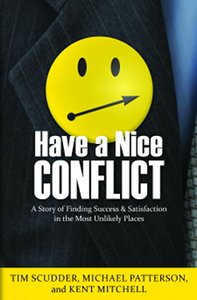
Have a Nice Conflict book cover
Photos: News & Experts
For most of us conflict is part of daily life. At home and at work, with friend and colleagues most people an constantly exposed to conflicts or potential conflicts. Recent research, according to Tim Scudder, CPA, suggests that the top reason people leave their jobs is because of a poor relationship with their immediate supervisors.
Scudder, chief executive officer, Michael Patterson, Ed.D., vice president of business development, and Kent Mitchell, vice president of communications, of Personal Strengths Publishing, Inc., an international firm that prepares companies and their executives to better deal with conflict in the workplace, believe it is possible to prevent conflict.
Anticipate, prevent, identify, manage and resolve are the five steps they propose to prevent conflict. It is their opinion that conflict can become an opportunity to resolve long-standing issues and lead to more fulfilling and productive lives.
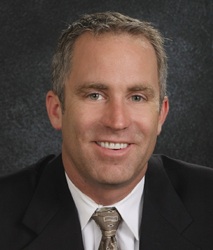
Tim Scudder, coauthor, Have a Nice Conflict
In Have a Nice Conflict: A Story of Finding Success and Satisfaction in the Most Unlikely Places (Personal Strengths Publishing, $19.95), a book they coauthored and published this year, they present a fictional conflict case study to address the conflict process.
“Unresolved or poorly managed conflict costs companies is ways they can’t even calculate,” said Scudder. “Lost institutional memory, low productivity, bad morale, high turnover all cost real companies real dollars. On the other hand, well-managed conflict can not only prevent all those losses, but it can also promote higher productivity and a stronger bottom line. So, the end result will not only be fewer conflicts, but also nicer ones with positive results.”
The 233-page hardcover book is divided into ten chapters. The three authors illustrate conflict issues by presenting Relationship Awareness Theory through the conflicts faced by John Doyle, a fictional character. They believe the character’s approach to conflict leads to positive results that resolve problems and “enhance the relationships of the people involved.”

Michael Patterson, Ed.D., coauthor, Have a Nice Conflict
Some of the suggestions shared in John’s Notebook at the end of the book include seeking to work well with others, helping to make people feel worthwhile, meeting others where they are and building the relationship whenever possible.
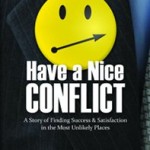
Click to buy Have a Nice Conflict
Comments:
Filed Under: Books
Posted by Elena del Valle on September 30, 2011
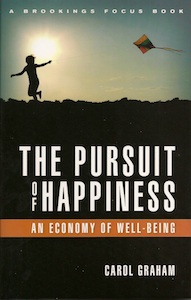
The Pursuit of Happiness book cover
Are wealthy people happier than poor and middle class people? Is a person’s state of happiness a reflection of his or her income? In other words, must income be tied to happiness? What is the relationship between the two? Is it more important to reduce misery or to improve a person’s emotional well being? Is well being tomorrow a good reason to sacrifice happiness today? Everyday people and veteran researchers continue to seek the answers to these questions, especially in the past decade.
This has prompted a burgeoning collaboration between economists and psychologists. Some countries have begun to examine and measure economic happiness issues and address their possible public policy implications. The Brazilian, British and French governments have established programs to measure happiness in relation to their country’s progress. From a big picture perspective this is a novel and controversial approach.
Should nations dedicate resources toward improving their citizens state of contentment or their economic well being? And in making those decisions is it better to focus on tomorrow’s or today’s welfare? Carol Graham, a researcher of “happiness economics” with a decade long track record, examines these issues in The Pursuit of Happiness: An Economy of Well-Being (Brookings Institution Press, $24.95), a 164-page hardcover book published this year.
The book is divided into five chapters: Happiness: A New Science, What We Mean by Happiness: A “Theory” of Agency and Well-Being, Happiness Around the World: What We Know, Adaptation and Other Puzzles, and GNH versus GNP?
Her international research and that of her colleagues has led her to what she calls the paradox of happy peasants and frustrated achievers, she explains in the first chapter. Around the globe she has found that poor people are on average less happy than wealthy people but very poor people often are very happy; poor people often say they are happier than the slightly wealthier among them and even the very rich.
In the absence of abject poverty (and in some cases excess wealth), health concerns, uncertainty, divorce, inflation and unemployment, it seems people across the world are amazingly resilient and adaptable; able to find a constant level of contentment (as defined by them in open ended survey responses), according to Graham.
She indicates that much evidence establishes that happy people are healthier and perform better in the labor market and may have a greater ability to lead purposeful lives than less happy people. Some happiness may be ideal, leading to contentment and purposefulness while too much happiness may lead to complacency, low performance at work.
Graham is a senior fellow in Global Economy and Development and Charles Robinson Chair in Foreign Policy at the Brookings Institution. She is also College Park Professor at the University of Maryland’s School of Public Policy. Her previous books include Happiness around the World: The Paradox of Happy Peasants and Miserable Millionaires, and Happiness and Hardship: Opportunity and Insecurity in New Market Economies.
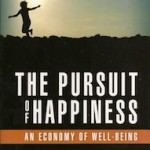
Click to buy The Pursuit of Happiness
Comments:
Filed Under: Books
Posted by Elena del Valle on September 23, 2011
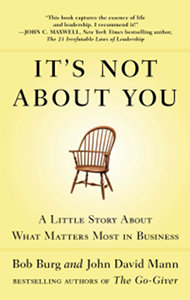
It’s Not About You book cover
Photo: Higher Level Group
Bob Burg, sales executive, and John David Mann, who likes to write about business and leadership, co-authored The Go Giver and Go-Givers Sell More in the past. This week, their new book, It’s Not About You: A Little Story About What Matters Most in Business (Portfolio Penguin, $23.95), written as an inspirational fable designed to share wisdom about leadership and subtle influence, was published.
The 144-page softcover book is divided into 14 chapters: The Offer, The Question, The Top Floor, Influence, The Heart of the Operation, The Language of Strength, The Work, Being Muddy, Birth and Death, An Imprint on the Soul, Robbie, Chaos, The Speech, and The Chair; an end section with words of wisdom. An example is of those listed is “The best way to increase your influence is to give it away.”
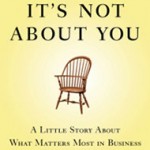
Click to buy It’s Not About You
Comments:
Filed Under: Books
Posted by Elena del Valle on September 16, 2011
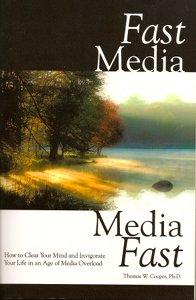
Fast Media, Media Fast book cover
In the United States, the average household consumes eight hours or more a day of television plus web surfing, texting, social media and email, according to a recently published book*. Thomas W. Cooper, Ph.D., a specialist in media and culture, thinks people today rely too much on outside influences they receive from media and marketing messages. He advises reconnecting with others and being aware of media overload. In his most recent book, *Fast Media, Media Fast: How to clear your mind and invigorate your life in an age of media overload* (Gaeta Press, $19.95), published this year, he discusses media responsibility.
The idea, he explains in the Introduction, is to be an active participant instead of a viewer; to be a creator rather than a consumer. By abstaining from consuming media he seeks a rebirth of sorts that may allow him to get in touch with his creative side again. He invites readers to consider the idea of a temporary media fast as he has been doing periodically since 1989. At the end of the fast he, and those readers who follow his example, can choose how much media to introduce back into his life, how often, of what kind, for what purpose and so on.
The 225-page paperback book is divided into ten chapters and four parts: Taking a Personal Media Fast or Diet, Learning from the Fast, Group Fasting and The Ultimate Choice. It also includes two appendices, Personal Fasting and Group Fasting.
Cooper is professor of Visual and Media Arts at Boston’s Emerson College. Before joining the faculty at Emerson, Cooper taught at Harvard University and University of Hawaii. He is also speechwriter for Jochen Zeitz, chief executive officer, Puma. Cooper, a resident of Swampscott, Massachusetts, is the author or co-author of six previous books and one hundred academic and professional articles on media ethics and related topics.

Click to buy Fast Media, Media Fast
Comments:
Filed Under: Books
Posted by Elena del Valle on September 9, 2011

Finance Without Fear book cover
Photos: Prosperous Communities, Inc.
William S. Hettinger, Ph.D., a consultant and educator, and John Dolan-Heitlinger, MBA, a consultant and business executive, believe the long term success of a business is tied directly to the owner’s and manager’s ability to understand where the money comes from and where it goes; that business acumen is not enough if the owner or person heading a business doesn’t understand the financial issues pertaining to his or her company. It is their belief that to control a business it is necessary to understand the numbers.
“You can fix practically any business problem but only if you first understand where your money comes from,” said Dolan-Heitlinger.
They outline what they consider essential financial knowledge for a business in Finance Without Fear: A Guide to Creating and Managing a Profitable Business, a 312-page softcover book published this year by the Institute for Finance & Entrepreneurship with a retail price of $25.95.

John Dolan-Heitlinger, MBA coauthor, Finance Without Fear
The book, they indicate in the Introduction, was written to explain the essential issues of finance and how to use finance as a tool to those starting or expanding a business, managers wishing to apply financial principles to their business, board members who want to broaden their knowledge of the finance of the business, and students.
“You may think finance is complicated and intimidating,” said Hettinger, “but it’s really not that difficult to understand. Not understanding financial statements leaves you open to being blindsided.”
The book is divided into 21 chapters and four main sections: Introduction, Financial Statements, Tools to Help You Make Money, and Building and Operating Your Business to Make Money.

William S. Hettinger, Ph.D., coauthor, Finance Without Fear
Hettinger is president of Prosperous Communities, a housing and economic development consultancy. He is the author of several other books including Living and Working in Paradise: Why Housing is Too Expensive and What Communities Can Do about It which analyzes the causes of housing market failure in resort communities.
Dolan-Heitlinger is the president of D-H & Associates Consulting, a business management and governance consultancy. He has been consultant, chief executive officer and senior executive for more than 25 years in diverse economic and demographic environments. Retired as a Coast Guard Reserve commander, Dolan-Heitlinger had commands and leadership positions in the homeland security and disaster response fields.
Both are principals at the Institute for Finance and Entrepreneurship which provides training and mentoring to small business owners.

Click to buy Finance Without Fear
Comments:
Filed Under: Books
Posted by Elena del Valle on September 2, 2011
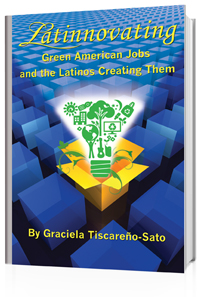
Latinnovating book cover
Photos: Gracefully Global Group
Graciela Tiscareno-Sato, owner, Gracefully Global Group believes some Latinos strive to create social and industrial innovation to reuse, preserve and conserve resources. The San Francisco resident, formerly a member of the U.S. Air Force, authored Latinnovating Green American Jobs and the Latinos Creating Them (Gracefully Global Group, $25), a 211-page softcover book showcasing ten examples of Latino led innovation and entrepreneurship that in her opinion have escaped the attention of national media.
The idea behind the book is sustainability “as a foundation for 21 century survival and growth,” she explains in the Introduction. The book was born of the frustration Tiscareno-Sato felt at the opportunities she believes were missed by the media of identifying the efforts of everyday Latinos contributing to the green movement.
The book is divided into one section each for a Latino innovator in addition to Introduction and Final Thoughts chapters: Carmen Rad, Eco-friendly printing leader; Rodrigo Prudencio, Venture capitalist; Rosamaria Caballero-Stafford, Eco-consultant; Luis Rojas, Accountant turned solar developer; Sandra Artalejo, Fashion designer and queen of creative reuse; Dennis Salazar, Packaging industry thought leader; Humberto Rincon, Mechanical Engineer reducing consumption; Monica DeZulueta, Engineer reducing carbon footprints; Robert Zardeneta, Social justice leader transforming communities; and Frank Ramirez, Entrepreneur solving energy storage problems.

Graciela Tiscareno-Sato, author, Latinnovating
The chapters are the result of an initial questionnaire followed by individual interviews and research about each case study. It is her belief that Latinos follow an old cultural mandate to conserve and preserve natural resources.
Tiscareno-Sato was recognized by Latina Style Magazine as the San Francisco Bay Area Entrepreneur of the Year in May 2010. In November 2010, she was selected Entrepreneur of the Year at the Anna Maria Arias Memorial Business Fund Gala in Washington D.C.

Click to buy Latinnovating
Comments:
Filed Under: Books




































